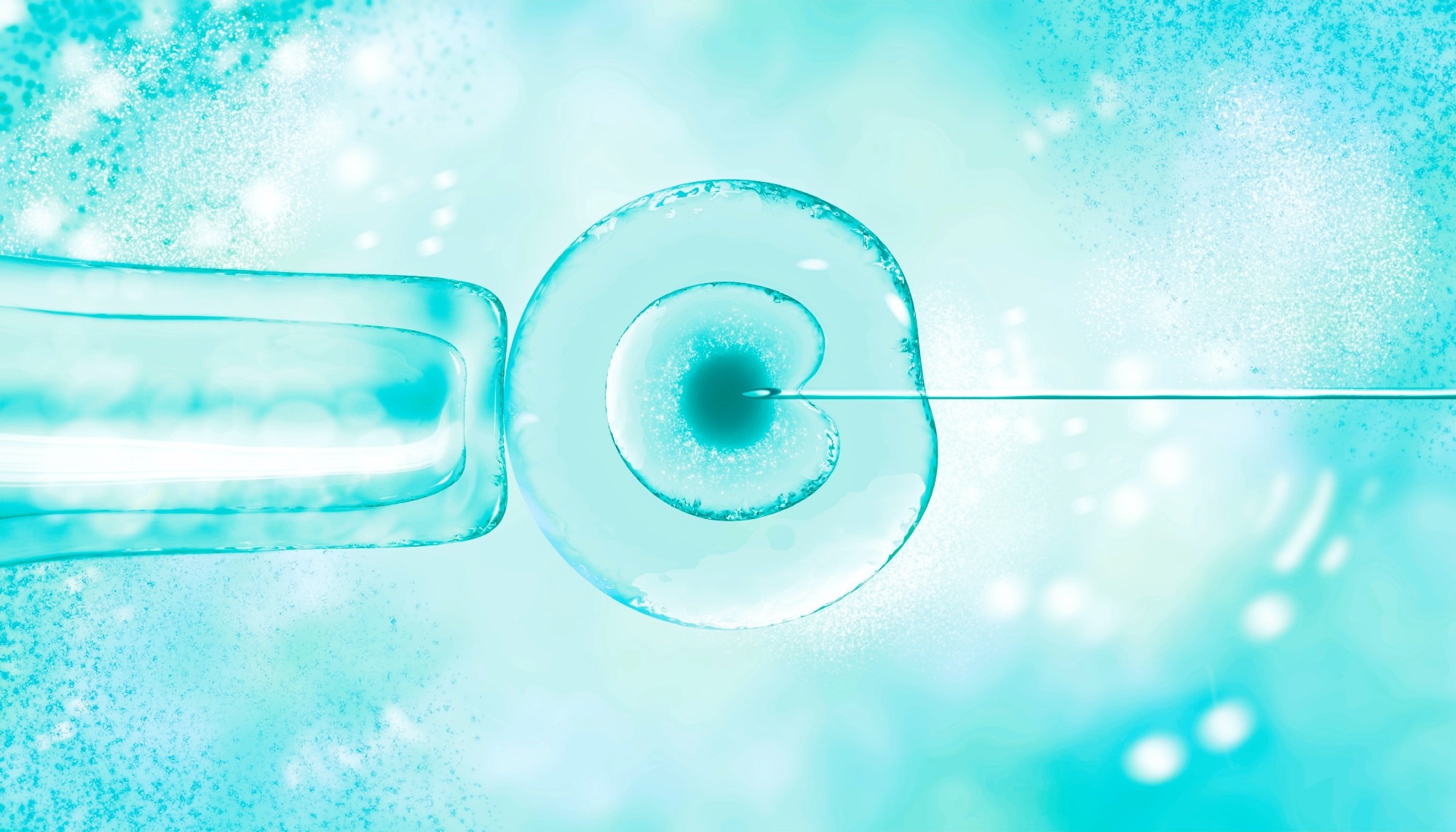Reviewed by Lauren HardakerSep 1 2025
Oocyte maturation ceases for many years. Researchers from Konstanz and Göttingen have discovered which protein keeps this condition stable over a long time.
 Image credit: Anastasiya Lavrik/Shutterstock.com
Image credit: Anastasiya Lavrik/Shutterstock.com
The fertilization of an egg by a sperm is essential for human reproduction. Immature oocytes are transformed into fertile ones by a complicated biological process. The process begins in the female embryo and stops for the first time shortly after birth. Oocytes begin to mature again several years later, during puberty.
Surprisingly, essentially no transcription occurs in fully grown immature oocytes, which normally occurs continually in human cells. During transcription, genes are “copied” into messenger RNAs, which serve as blueprints for protein synthesis. However, when oocytes continue the maturation process, they must rely on messenger RNAs that had already been transcribed before the halt.
Until now, we did not know exactly how vertebrates inhibited the translation of existing messenger RNAs, sometimes for years, thus keeping the maturation of oocytes paused.
Thomas Mayer, Molecular Geneticist, Department of Biology, University of Konstanz
A Protein Hits Pause
Mayer and his team, along with colleagues from Konstanz and Göttingen, have made significant progress in solving this conundrum in their latest study, published in Nature Communications. They discovered a protein, the translation inhibitor 4E-T, essential for keeping immature oocytes inactive.
Using experiments that eliminated the 4E-T protein from frog and mouse oocytes, the researchers proved that this severe decrease was sufficient to resume oocyte maturation.
Mayer added, “The loss of the 4E-T protein during the pause in maturation led to a widespread increase in the translation of messenger RNA into the respective proteins. In collaboration with Florian Stengel, a mass spectrometry expert at the University of Konstanz, we were able to show that these proteins included important regulators of the maturation process and that their activation initiates the next steps in oocyte maturation.”
Part of a Larger Network of Interactions
The researchers also discovered important 4E-T interaction partners that are necessary for its translation-inhibiting activity in immature oocytes. Above all, this contains the RNA-binding protein PATL2, unique to oocytes.
“Based on our analysis, we conclude that the interaction between 4E-T and PATL2 forms the core of a larger network of interactions between proteins that allows 4E-T to accumulate on specific messenger RNAs and thus inhibit their translation,” Mayer concluded.
Interestingly, mutations in the human 4E-T gene have been linked to premature ovarian insufficiency, a type of menopause that occurs early and is associated with reproductive issues. This study's findings will also help to improve our understanding of such problems in oocyte maturation.
Source:
Journal reference:
Heim, A., et al. (2025) Translational repression by 4E-T is crucial tomaintain the prophase-I arrest in vertebrateoocytes. Nature Communications. doi.org/10.1038/s41467-025-62971-9.